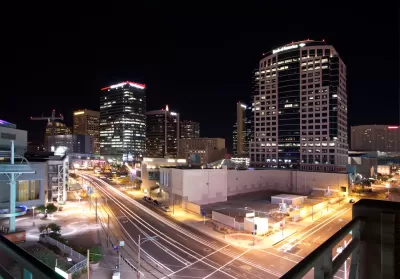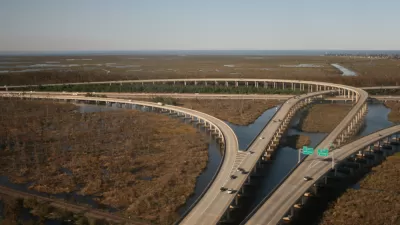Phoenix's roads are the most dangerous in the state for pedestrians, but the city is taking little action to make them safer.

Agnel Philip and Bree Burkitt take a closer look at pedestrian safety in Phoenix. Of Arizona cities with populations greater than 10,000, Phoenix has the highest pedestrian death rate, and the number of deaths doubled between 2010 and 2017.
The city has put in 20 special crossing signals called HAWK signals, but Philip and Burkitt say the locations of the signals do not correspond with crash hot spots:
Despite the signals' potential to save lives, The Republic analysis showed the city is installing them in areas where no pedestrians were seriously injured or killed in recent years. Among the 23 signals the city has built or plans to build this year, half aren't within 300 feet of serious injury or fatality crashes during the period The Republic analyzed.
They also note that the most dangerous areas for pedestrians are on wide, high-speed roads with few crossings, which are common features of main thoroughfares in the city. While half of pedestrian deaths in Arizona involved individuals who were intoxicated, the speed of vehicles is also a key factor in the severity of pedestrian crashes, and activists are calling for design changes that would narrow roads and slow traffic.
"Dozens of cities across the United States have begun redesigning their streets in response to surging pedestrian death rates in recent years, setting a target of zero roadway deaths. But in Arizona, there's almost no commitment to that goal," say Philip and Burkitt.
FULL STORY: On Phoenix's most dangerous streets, little has been done to address the pedestrian death toll

Alabama: Trump Terminates Settlements for Black Communities Harmed By Raw Sewage
Trump deemed the landmark civil rights agreement “illegal DEI and environmental justice policy.”

Study: Maui’s Plan to Convert Vacation Rentals to Long-Term Housing Could Cause Nearly $1 Billion Economic Loss
The plan would reduce visitor accommodation by 25% resulting in 1,900 jobs lost.

Planetizen Federal Action Tracker
A weekly monitor of how Trump’s orders and actions are impacting planners and planning in America.

Waymo Gets Permission to Map SF’s Market Street
If allowed to operate on the traffic-restricted street, Waymo’s autonomous taxis would have a leg up over ride-hailing competitors — and counter the city’s efforts to grow bike and pedestrian on the thoroughfare.

Parklet Symposium Highlights the Success of Shared Spaces
Parklets got a boost during the Covid-19 pandemic, when the concept was translated to outdoor dining programs that offered restaurants a lifeline during the shutdown.

Federal Homelessness Agency Places Entire Staff on Leave
The U.S. Interagency Council on Homelessness is the only federal agency dedicated to preventing and ending homelessness.
Urban Design for Planners 1: Software Tools
This six-course series explores essential urban design concepts using open source software and equips planners with the tools they need to participate fully in the urban design process.
Planning for Universal Design
Learn the tools for implementing Universal Design in planning regulations.
Caltrans
Smith Gee Studio
Institute for Housing and Urban Development Studies (IHS)
City of Grandview
Harvard GSD Executive Education
Toledo-Lucas County Plan Commissions
Salt Lake City
NYU Wagner Graduate School of Public Service





























